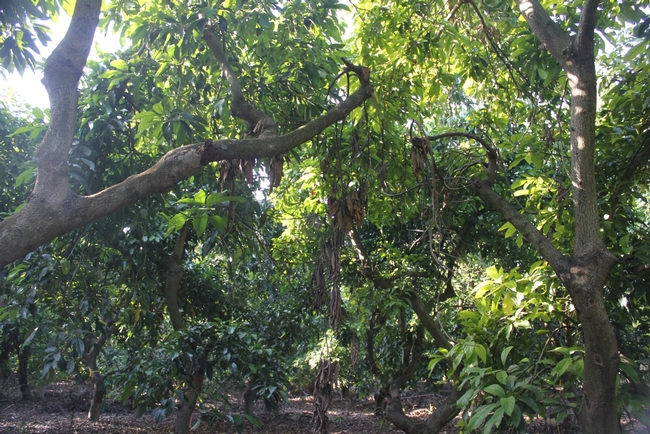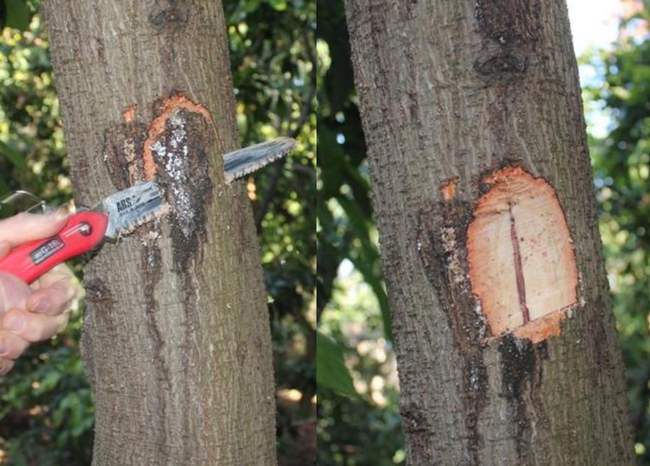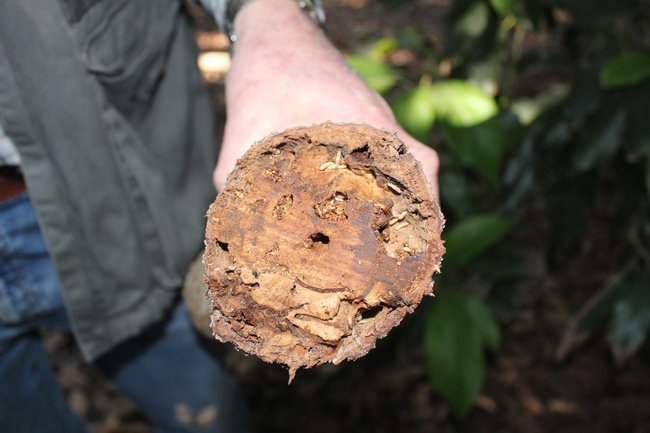In 2003, the Polyphagous Shot Hole Borer (PSHB) was observed in Southern California. This beetle has a Fusarium sp. symbiont that causes susceptible host tree damage. The PSHB appears to be established in Los Angeles, Orange, and Riverside Counties. In the Los Angeles area, PSHB has attacked over 200 species of native, ornamental and horticultural trees, including the native Coast Live Oak, California sycamore, and about 57% of the commonly used street trees in the area. Avocado trees are susceptible; the beetle and fungus have been found in several backyard avocado trees as well as some commercial avocado orchards in Los Angeles and Orange counties. The PSHB has caused severe damage to commercial avocado orchards in Israel, and is a threat to California’s avocado crop which is worth about $460.6 million and accounts for about 87% of the US production.
To better understand the biology of and potential management strategies for the PSHB Fusarium complex threatening California’s avocado trees, Mary Lu Arpaia, Subtropical Horticulture Extension Specialist in the UC Riverside Botany and Plant Sciences Department and Kearney Agricultural Research and Extension Center, and David Obenland, Plant Physiologist, at USDA-ARS in Parlier, California, visited Israel in March, 2013. The PSHB is an invasive pest in Israel and was found in Israel’s commercial avocado orchards in 2009. The PSHB in Israel is causing serious damage, and Israeli research may help us develop detection and management strategies in California.
Biology and Behavior: A visit with Drs. Zvi Mendel and Stanley Freeman, Israel’s lead PSHB researchers provided insight into research on the biology and behavior of the PSHB Fusarium complex. Drs. Mendel and Freeman contend that even though the beetle uses several tree species as hosts, it is monophagous, only feeding on the Fusarium symbiont. According to their research, the beetle’s reproductive cycle in susceptible trees is: the adult pregnant female beetle bores through a tree’s bark, creates galleries under the bark, infests the galleries with a Fusarium fungal symbiont carried in the adult beetle’s mycangium (a specialized structure at the back of the jaw), and lays eggs in the galleries. Larvae are mostly female. While the larvae develop, the Fusarium sporulates. The developing larvae eat the fungus, develop into adults in about a month, and mate while in the gallery. The pregnant females exit the gallery through exit holes in the bark. To survive, the emerged pregnant female has about 48 hours to find a suitable host location and continue the life cycle.
Hygiene: The geographic area where the beetle is found in Israel appears to be expanding, even though the infested avocado trees in the primary infested area were destroyed. The PSHB is thought to have been transported in bins originating from the infested area. A best practice for California growers and packers will be to use clean bins and ensure that there is no vegetative matter in the bins prior to transport. This practice will also help reduce the spread of avocado thrips and persea mite.
Chemical control of the beetle or the fungus: There has been limited success in controlled lab situations, but field applications are not effective. So far, no effective chemical control technologies have been developed for the beetle.
Infestation: A mature orchard that was infested approximately 5 to 6 years ago became heavily infested within 2 to 3 years, and will be bulldozed. Infestations may require bulldozing orchards.
Detection: Mature avocado orchards with heavy infestation have severe limb dieback, many broken branches littering the orchard floor, dropped mature fruit, abnormally small mature fruit, and sugar exudates caused by the bore holes. A 2-year-old infested orchard did not exhibit very much limb dieback; when infestation of young trees is observed, it is usually on the base of the trunk (found in either the rootstock or the scion wood).
Spread to native and landscape hosts: Israel has seen the spread of the beetle to native oaks and the box elder. California will need to educate the public to help safeguard our native and landscape trees from the spread of the PSHB and Fusarium complex. Native and landscape tree infestations may make it difficult to control the spread of infestations into commercial avocado orchards.
California outlook: California must be diligent in looking for tree infestation. The avocado industry is working with the landscape industry and forestry service in California to understand the rate of infestation and range of susceptible hosts. Funding for surveys; understanding the beetle and fungal biology; developing control strategies, technologies and practices; and basic work on the origin of the beetle is essential. California researchers should collaborate with and learn from their Israeli colleagues.
Author - KARE Program and Facility Coordinator, IR-4 Field Research Center Director
Attached Images:

Avocado tree in Israel with limb breakage and branch dieback due to PSHB infestation and its Fusarium symbiont (photo by M. L. Arpaia).

External symptoms of PSHB infestation, including sugar exudate, bark darkening, and wood staining due to Fusarium infection of the woody tissue (photo by M. L. Arpaia).

PHSB infested avocado branch in later stages of decline. The white larvae are termites that infested the branch after dieback started. Note the staining of the wood and evidence of the PHSB galleries. (photo by M.L. Arpaia)